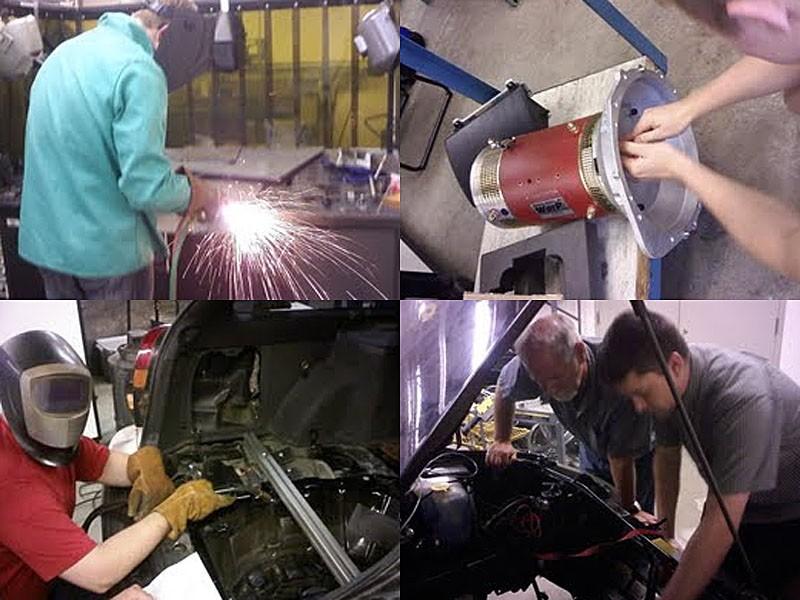GV club creates electric cars while gaining skills

Courtest Photo / Ron Grew Students work on the electric car that is located in the Keller Engineering Building
Jan 23, 2012
For many Grand Valley State University students, sustainability is small measures like recycling and buying fluorescent light bulbs, but in the GVSU Electric Car Club, members are going green on a bigger scale while gaining experience that will make them more competitive in the job market.
The group, which is in its third year at GVSU, converts gasoline-powered cars to electric ones each year.
“The reason we go to school is for what’s after,” said Andrew Twining, president of ECC. “(Being involved in a group) will catch someone’s eye. It’s the difference between getting an interview and not getting an interview.”
In 2009, Ron Grew, GVSU engineering lab supervisor and Mehmet Sözen, an engineering professor, began the Electric Car Club with big ideas. Grew and his wife donated a 1999 Subaru Outback that would be later converted into an electric car. This project was intended for educational purposed to provide students and faculty with hands-on experiences with electronic vehicle conversion.
“I joined the club because I wanted more experience in a leadership role,” Twining said. “We are making an electric car and that is something I always thought would be a challenge.”
In the spring of 2011, the group received an $11,500 grant from the Padnos College of Engineering and Computing. From there parts were ordered and by summer, the group was able to begin to install the parts. With so few members of the group, they can only do so much at a time.
Paul Pancella, a physics professor at Western Michigan University, joined ECC to present the concept of converting a regular car into an electric car.
When Pancella’s 1992 Honda Civic’s engine went bad, he came up with the idea of transforming it into an electric car. From taking out the engine to installing the battery cells and solar panels on the dashboard, Pancella went from eco-frowny to eco-friendly. His project began in Spring 2007 with an idea and was completed in August.
This “Hondatron” is drivable on the highway with the ability to reach speeds of 90 to 95 miles per hour during the summer. At city speeds in warm weather, the car is able to range about 100 miles.
In addition to the inspiration given by Pancella in his own completion of a converted electric vehicle, freshman engineering student Caitlyn Hurley, the club’s only female member, said the experience has been valuable.
“Even though I’m the only girl, I don’t feel overpowered in the club,” Hurley said.
Hurley also said she didn’t have a lot of car knowledge or experience before the club, but has learned components of the car, the design process and was given the realistic application since joining.
The group is looking for students willing to give a minimum 30 minutes of their time to contribute to the project; however, two to two-and-a-half hours are preferred, Grew said.
“We need people to take something that’s been done before, come up with unique solutions, and create them,” Twining said.
Currently, the club meets Mondays at 6 p.m. in 108 Keller.
For more information, visit www.gvsu.edu/engineering/ecc-201.htm or contact [email protected].






















